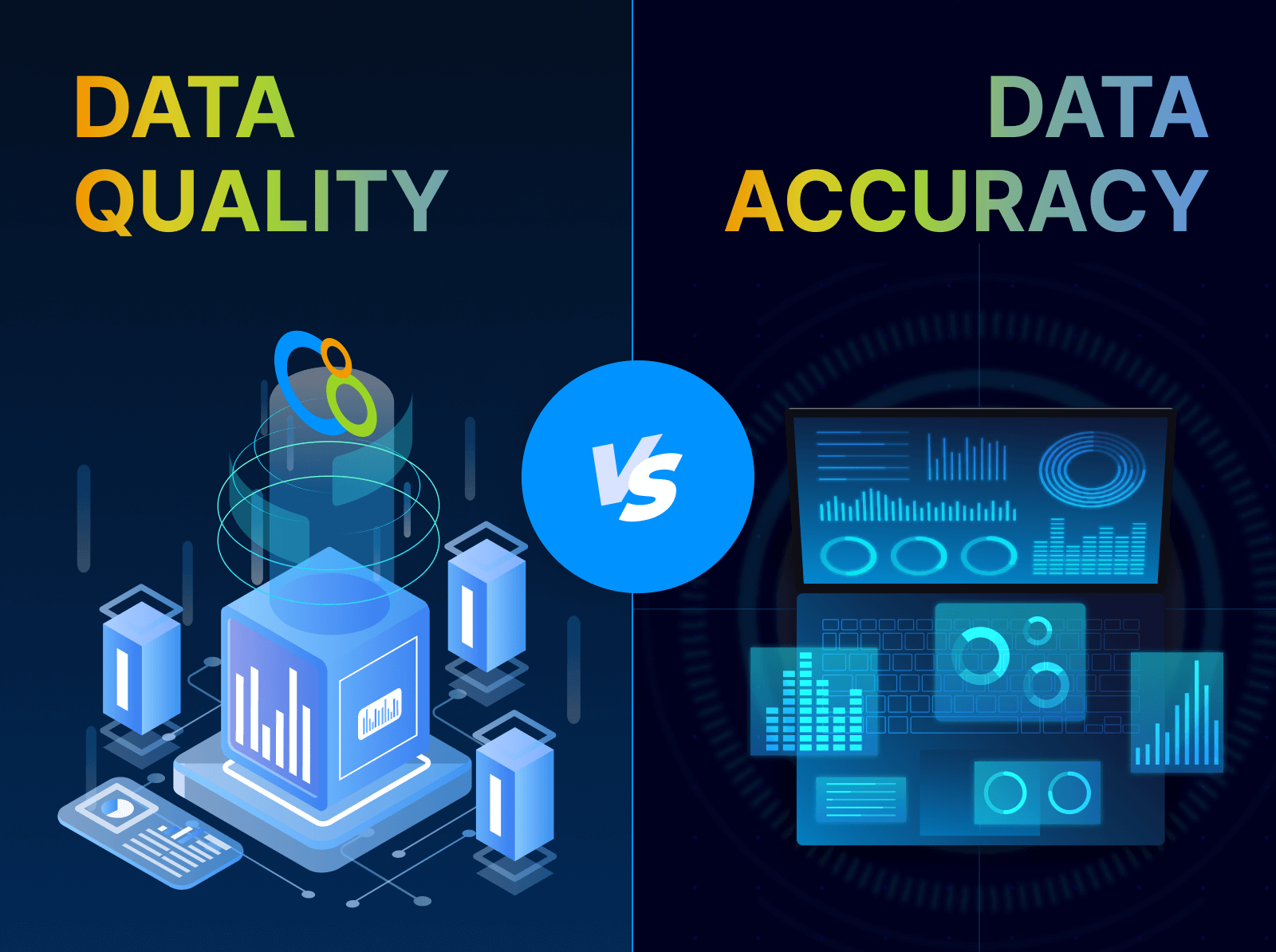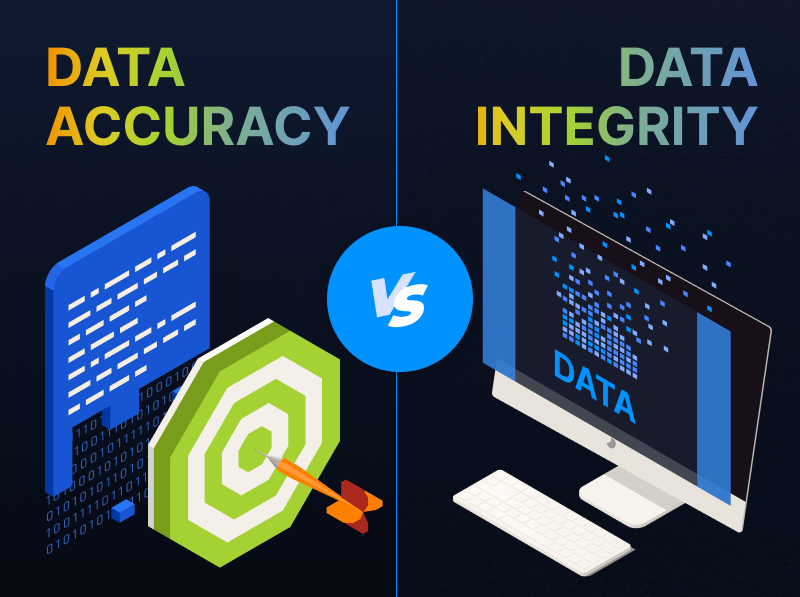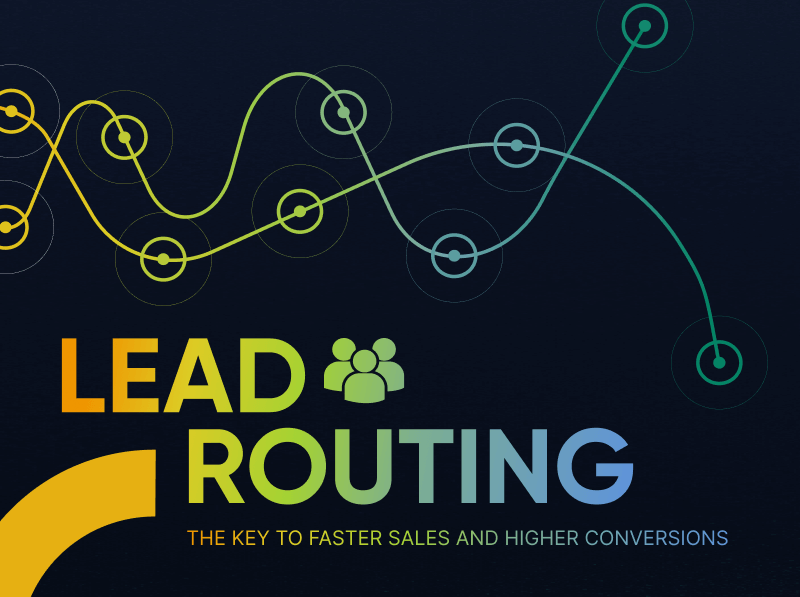Data Quality vs Accuracy: Definitions, Differences, and How to Fix Them
In B2B marketing, data is everywhere, but not all of it is useful. And while ‘data quality’ and ‘data accuracy’ often get used interchangeably, they’re not the same thing. Knowing the difference isn’t just a technicality: it’s the key to smarter data management, better campaign performance, and fewer headaches for everyone downstream.
Whether you’re trying to clean up a messy lead list, tighten up campaign targeting, or get an invite to President’s Club with the sales team, understanding how accuracy fits inside the bigger picture of data quality helps you focus on the right fixes and avoid chasing the wrong problems.
Differences Between Data Quality and Data Accuracy
Data accuracy refers to how closely a data point matches the real-world value it’s supposed to represent. [Link to: What is Data Accuracy blog] Think of it as a snapshot in time. If the job title, phone number, or email address in your database is correct, that’s accuracy.
Data quality, on the other hand, is broader. Accuracy is one of its many dimensions. At Integrate, we define data quality [Link to: Top 10 Data Quality Metrics blog] through ten key metrics—accuracy, completeness, consistency, integrity, timeliness, validity, lineage, uniqueness & duplicate rate, compliance, and hygiene.
In other words:
- Accuracy is a component of data quality.
- Data quality is a multidimensional standard that evaluates whether data is fit for purpose.
Accuracy asks, “Is this true?” Quality asks further: “Is this usable, reliable, compliant, and valuable? In other words, can we actually use this data without it imploding a campaign or getting fined for violating compliance laws?”
Examples of Data Quality vs Data Accuracy in Use
Let’s say your marketing database includes a lead named Erica Johnson listed as the CMO of Acme Corp.
- If Erica Johnson is indeed the current CMO, that record is accurate.
- But if the record is missing her phone number, contains inconsistent job title formatting, or lacks consent information, it would fall short on data quality.
Another example: A phone number could be accurate, but if it’s stored in different formats across systems (e.g., (555)123-4567 vs. 555-123-4567), your integration or automation rules might fail. That’s a quality issue, even though accuracy isn’t the problem.
One more: A webinar attendee’s name and company might be captured correctly (accurate), but if their email address includes typos, their job title isn’t mapped to a persona, and their record lacks regional compliance tags, it’s not high-quality data. It might enter your system correctly but fail to move through scoring and nurture programs effectively.
Why the Difference Matters to Marketing Ops
Marketing operations professionals can’t afford to focus on accuracy alone. Campaign success, lead routing, and compliance hinge on a broader data governance strategy. Prioritizing accuracy without addressing completeness, deduplication, or compliance creates operational risk.
Instead, MO Pros should:
- Use accuracy as a metric for field-level verification.
- Use data quality as a framework for governance, orchestration, and measurement.
Think of accuracy as the “fact check,” and data quality as the “usability check.” You need both.
How Can Data Professionals Identify and Fix Problems in Accuracy vs Quality?
Knowing the difference is useful. Knowing what to do about it? That’s where things actually improve. For Marketing Ops teams and data professionals, it’s critical to have practical steps for diagnosing issues and improving both the precision and usability of your data. Let’s consider targeted strategies to strengthen accuracy and maintain overall data quality.
How to Improve Data Accuracy
Improving data accuracy starts with validating individual data points to ensure they reflect real-world truth. Here are tactical ways to strengthen accuracy:
- Audit high-priority fields. Routinely spot-check fields like job title, email, and phone against trusted sources.
- Use field-level validation. Add rules at the point of capture to reject invalid entries.
- Enable real-time verification. Sync with third-party tools that validate contact information as it’s entered.
- Update enrichment logic. Make sure enrichment tools reflect current job changes and contact information.
- Track accuracy over time. Create a benchmark for error rates and measure improvements.
How to Monitor and Improve Overall Data Quality
Data quality encompasses accuracy but also includes completeness, compliance, integrity, and more. It’s about ensuring data is usable, secure, and scalable. Here’s how to manage it holistically:
- Define data quality KPIs. Set thresholds for completeness, freshness, and compliance.
- Implement QA checkpoints. Validate leads at ingestion for duplicates, missing fields, and privacy compliance.
- Centralize data intake. Consolidate channels and formats into one governed flow.
- Enforce normalization rules. Ensure consistency across regions, systems, and providers.
- Assign ownership. Empower data stewards or MOps teams to monitor quality and resolve issues quickly.
By aligning tools, processes, and ownership around both accuracy and quality, MO Pros can deliver reliable, ready-to-activate data.
Additional Context: The 10 Metrics Behind Data Quality
If accuracy is just one part of the picture, what are the others? Data quality, as defined in our Top 10 Data Quality Metrics blog, includes:
- Completeness – Are all required fields filled in?
- Consistency – Are formats and values standardized across systems?
- Integrity – Are relationships between data entities preserved? [Data accuracy vs integrity blog]
- Timeliness – Is the data current and refreshed regularly?
- Validity – Does the data conform to business and technical rules?
- Lineage – Can you trace where the data came from?
- Uniqueness & Duplicate Rate – Are there duplicate records or IDs?
- Compliance – Does the data align with privacy regulations?
- Hygiene – Is the data free of errors, outdated entries, or irrelevant records?
All of these contribute to a database that performs well across campaigns, systems, and sales channels, not just one that looks right on the surface.
Final Takeaway
So the next time someone flags a data issue, ask yourself: are we talking accuracy or something bigger? Spot the difference, fix the right thing, and give your campaigns (and your team) a much smoother path to results.
At Integrate, we help enterprise marketing teams govern and validate their lead data across all acquisition channels—ensuring accuracy, enhancing quality, and turning lead data into revenue.








